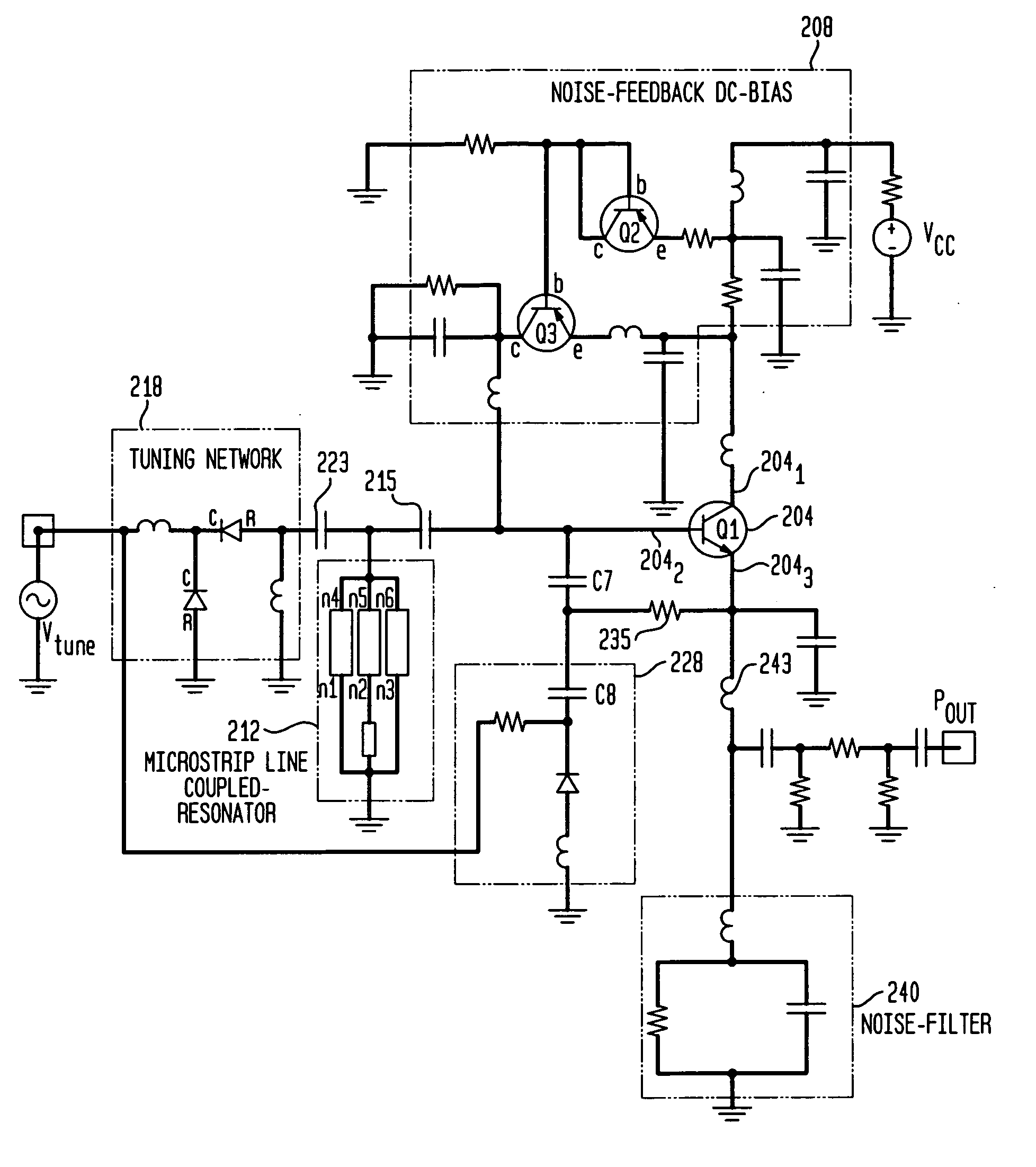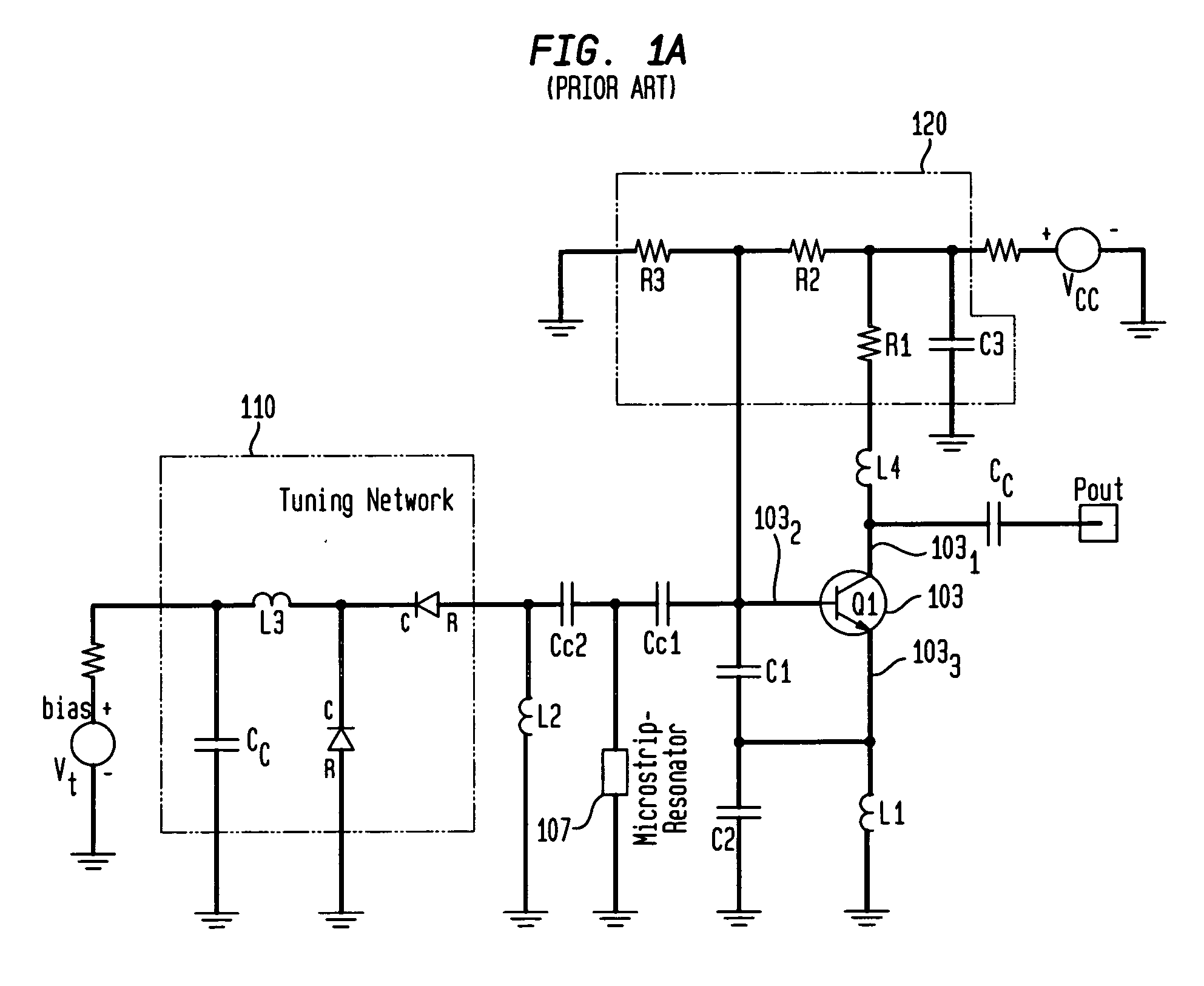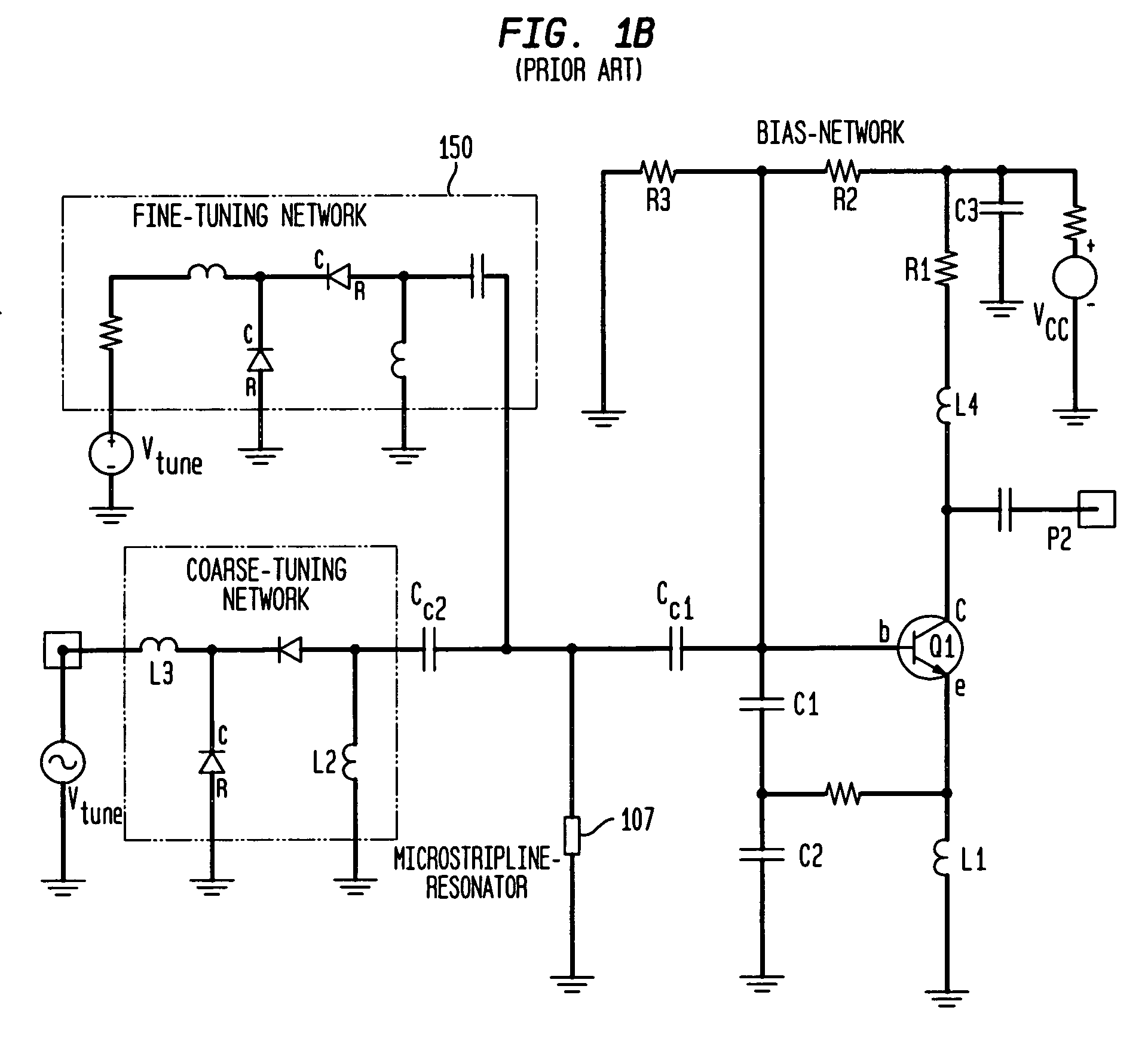Low noise, hybrid tuned wideband voltage controlled oscillator
a voltage control and wideband technology, applied in oscillator/vco design, semiconductor device details, oscillator/vco design typically poses a challenge to the rf transceiver system, and limits the ability to detect weak signals, etc., to achieve simple, yet effective, phase noise performance improvement, and phase noise performance improvement
- Summary
- Abstract
- Description
- Claims
- Application Information
AI Technical Summary
Benefits of technology
Problems solved by technology
Method used
Image
Examples
Embodiment Construction
[0055]FIG. 2 is a schematic circuit diagram of voltage controlled oscillator 200 in accordance with an aspect of the present invention. The oscillator 200 includes an active device 204, which in the embodiment shown comprises a bipolar transistor Q1. In general, the active device 204 may comprise any three terminal device that can provide a 180 degree phase shift between the first terminal 2041 and second terminal 2042. The active device 204 may therefore also comprise a field effect transistor (FET). In the embodiment shown in FIG. 2, the first, second and third terminals 2041, 2042, 2043 of the active device 204 respectively comprise the collector, base and emitter of the transistor Q1.
[0056] The oscillator 200 also includes a noise feedback and DC bias network 208 coupled across the first and second terminals 2041, 2042. The network 208 includes a pair of transistors Q2 and Q3 that, in the arrangement shown, compensate for temperature fluctuations or fluctuations in the supply v...
PUM
 Login to View More
Login to View More Abstract
Description
Claims
Application Information
 Login to View More
Login to View More - R&D
- Intellectual Property
- Life Sciences
- Materials
- Tech Scout
- Unparalleled Data Quality
- Higher Quality Content
- 60% Fewer Hallucinations
Browse by: Latest US Patents, China's latest patents, Technical Efficacy Thesaurus, Application Domain, Technology Topic, Popular Technical Reports.
© 2025 PatSnap. All rights reserved.Legal|Privacy policy|Modern Slavery Act Transparency Statement|Sitemap|About US| Contact US: help@patsnap.com



